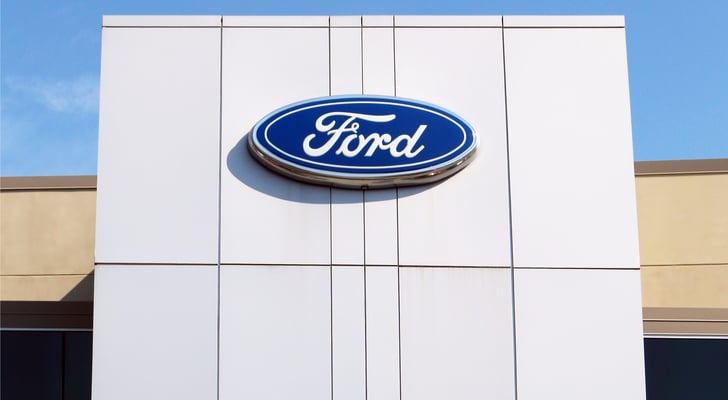Who can forget the Ford Motor Company (NYSE:F) ads from the 1980s that used the slogan, “Quality is Job 1?” They embraced the idea that Detroit cared about producing quality vehicles rather than just pumping them out. It’s a big reason Ford stock appreciated by 3,930% on a cumulative basis over the 18 years the slogan used to market its products.
How’s Ford stock done since the ads stopped running in 1998? It’s lost 71% of its value.
Today, the slogan at Ford appears to be “Cost Cutting is Job 1,” which is terrible news if you own Ford stock.
Here’s why.
Back in April 2017, I wrote a piece about Ford stock, wondering if its share price would ever get back to $20, something it hadn’t seen since June 2001.
To get there, I reasoned, it had to do three things. Almost a year later, I thought I’d review how it’s doing in each of these areas.
Driverless Cars
As I stated in my previous article, the company must bring an automated driverless vehicle to market by the end of 2021, if it wants Ford stock to double in price from where it currently trades.
Nothing’s changed at Ford regarding its timeline. It still plans to have a fully autonomous vehicle on the road by 2021. According to Ford’s website:
“The effort to build fully autonomous vehicles by 2021 is a main pillar of Ford Smart Mobility: our plan to be a leader in autonomy, connectivity, mobility, customer experience and analytics. The vehicle will operate without a steering wheel, gas pedal or brake pedal within geo-fenced areas as part of a ride sharing or ride hailing experience.”
Current partnerships with Lyft and Domino’s Pizza, Inc. (NYSE:DPZ) along with the recent acquisitions of Autonomic and TransLoc (not to mention the establishment of four new operating groups within Ford Mobility) suggests it sees a bigger picture emerging in the area of autonomous vehicles.
Ford wants to be out in front of the changes coming down the pike in how the company’s cars and trucks fit into future transportation infrastructure.
I can’t say for certain that Ford will meet the 2021 deadline, but it certainly appears more likely today than it did a year ago.
Reducing Ford Stock Debt
As inflation begins to rise and interest rates follow, it’s going to be incumbent upon companies of all sizes to carry as little debt as possible.
Firstly, higher debt means higher interest expense and lower profits. That’s only logical. However, a second more daunting reason is that we’ll likely see an economic slowdown in the next 2-3 years after corporations get used to having more capital at their disposal.
Very few CEOs are good at allocating capital; having more of it isn’t going to make them any better custodians of shareholders’ money.
CEO Jim Hackett has said Ford intends to eliminate $14 billion in costs over the next five years by narrowing its product range and producing more expensive SUVs and pickups.
Nowhere have I seen any mention of lowering its automotive debt, which stood at $15.9 billion at the end of December, the same number from a year earlier.
With Ford’s adjusted profit per share in 2018 expected to be considerably lower than the $1.78 in 2017, cost-cutting is not going to lead to lower debt.
I understand that Hackett’s trying to allocate significant capital to electrification and autonomous driving, both wise ideas, but ignoring the debt situation is only going to compound matters if Ford’s mobility vision misses the mark.
Free Cash Flow
Debt repayment and free cash flow are tied at the hip. You can’t have one without the other. In 2017, Ford had $11 billion in free cash flow, $1.9 billion less than a year earlier.
That’s money that could have been used for repaying more than 10% of its existing long-term debt. With lower profits in 2018, operating cash flows are likely to be lower as well, while capital spending will have to be maintained if it wants to hit the 2021 timeline.
Translation: We could see free cash flow of less than $10 billion, not a ringing endorsement of a company on the rise.
Bottom Line on Ford Stock
I was never a fan of hiring Jim Hackett as CEO, but now that he’s in there, it’s clear that he sees the writing on the wall.
Ford is toast if it doesn’t get its costs in line with its revenue while trying to innovate its way to growth.
Both admirable goals, the company never should have given up on a slogan that did well for almost two decades — some of the best years the company ever had.
If you’ve got a lot of patience, Ford stock might be worth a gamble. However, everyone else might look to one of the other car companies if making a long-term investment.
I just don’t see $20 anytime soon.
As of this writing, Will Ashworth did not hold a position in any of the aforementioned securities.

